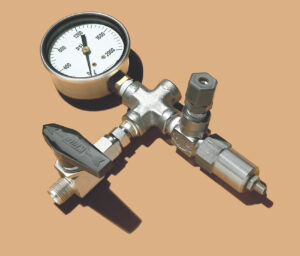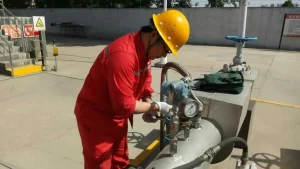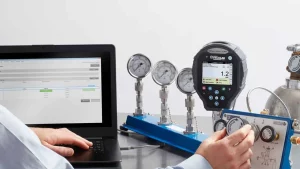In industrial settings, pressure gauges play a vital role in ensuring safety and operational efficiency. From monitoring boiler systems to maintaining fluid pressure in hydraulic equipment, these instruments provide real-time pressure data, allowing operators to prevent potential hazards. This article will explore the role of pressure gauges in industrial safety and how to ensure their reliability through proper selection and use.
1. Critical Safety Functions of Pressure Gauges
Preventing Overpressure: One of the primary functions of pressure gauges is to prevent overpressure in systems. By monitoring pressure levels in real-time, gauges allow operators to take corrective action before the pressure exceeds safe limits, thereby avoiding system failures or explosions.
Monitoring System Health: Pressure gauges offer insight into the health of an industrial system. A drop in pressure could indicate a leak, while abnormally high pressure may signal a blockage. Early detection through accurate pressure readings can prevent costly downtime and repairs.
Compliance with Safety Standards: Many industries are required to follow stringent safety standards, including regular pressure checks. Pressure gauges are essential for maintaining compliance with these standards, especially in sectors such as oil and gas, chemical processing, and manufacturing.
2. Selecting the Right Pressure Gauge for Industrial Applications
Material Compatibility: The material of the pressure gauge must be compatible with the media being measured. For example, corrosive fluids may require gauges made from stainless steel or other corrosion-resistant materials.
Pressure Range: Selecting a gauge with an appropriate pressure range is critical. Gauges should ideally operate within 25% to 75% of their maximum rated pressure for optimal accuracy and longevity.
Environmental Conditions: Consider the environmental conditions where the gauge will be installed. High-vibration areas may require dampened gauges to prevent wear, while extreme temperatures may call for gauges with temperature compensation.
3. Best Practices for Using Pressure Gauges in Industrial Environments
Install Protective Devices: In high-pressure environments, overpressure protectors or relief valves can help prevent damage to the gauge in case of sudden pressure spikes.
Use Gauge Isolators: In systems where the media being measured is corrosive or viscous, isolators can protect the gauge from direct contact with harmful substances. This prolongs the gauge’s lifespan and maintains its accuracy.
Routine Inspections: Regular inspections of pressure gauges are essential to detect wear, leaks, or calibration drift. Immediate replacement or repair of faulty gauges reduces the risk of system malfunctions.
4. The Impact of Faulty Pressure Gauges on Safety
False Readings: Faulty or miscalibrated gauges can provide inaccurate readings, leading to unsafe pressure levels. This can result in catastrophic failure, especially in high-risk industries such as oil and gas or chemical manufacturing.
Maintenance Oversight: Pressure gauges should never be overlooked during routine maintenance. Including gauge calibration and inspection as part of regular safety protocols is vital to ensure they are providing accurate information.
Pressure gauges are fundamental to industrial safety, offering real-time pressure data that helps prevent overpressure, leaks, and system failures. Proper gauge selection, installation, and maintenance are key to ensuring reliable performance in demanding industrial environments.



